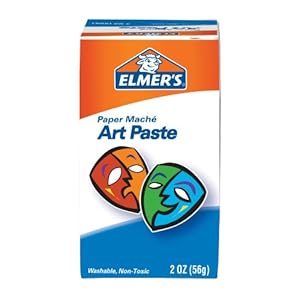We started out by talking about recycling and what it is.
I had pre-strung old record albums with a piece of yarn, so that I would be able to hang the artwork up when they were finished. (There were many interesting conversations with my students who come into the art room before school about what records are. They were fascinated and I felt OLD!
 Each table was given a basket full of random odds and ends that I was able to collect: wood scraps, puzzle pieces, plastic ware, unifix cubes, plastic
Each table was given a basket full of random odds and ends that I was able to collect: wood scraps, puzzle pieces, plastic ware, unifix cubes, plasticEaster eggs, etc. Pretty much anything that I could find free or extremely cheap, worked for me!
I gave each student a piece of scrap paper with craft glue on it. I showed them how to dip each piece into the glue and then place it onto the album.
I also showed them how they could build up, placing items on top of one another.
I thought about painting them in the style of Louise Nevelson, but I thought they looked so great as is, that I left them alone.
I have hung them up in the PreKinder hallway and they look amazing!!!
As a side note, living in Houston, I am lucky enough to have a couple of great resources for finding inexpensive materials to use in recycled art. We have the Center for Recycled Art, which is open 1 day a month- only to teachers. You can fill a brown grocery bag with ANYTHING and pay only $5.
I was able to purchase all of the albums for this project for $5, because they fit into a brown paper bag!
We also have Texas Art Asylum. You can donate your old materials to them and they will resell them or do as I do, and pick up whatever extra items I need for a very low price.
If you live in the area and haven't visited these ladies, I highly recommend it!!!
Pin It
















































